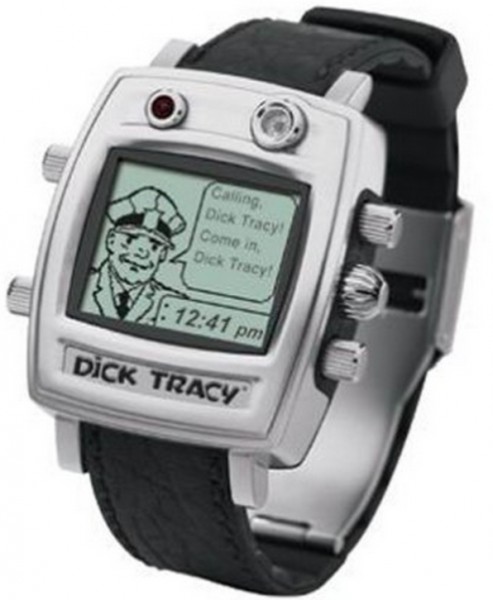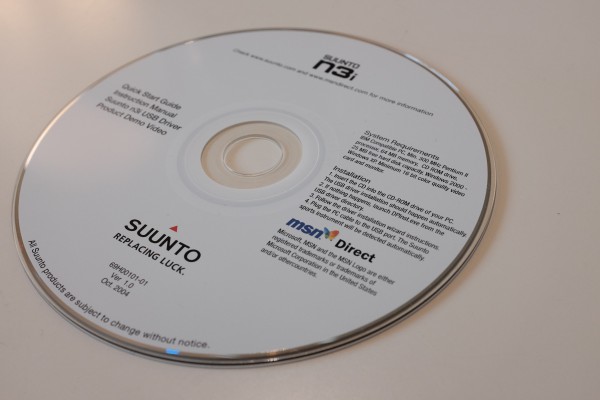For all the blathering smartwatch idiots...
It's a reminder: You're even dumber than you think.
Tireless commentaries and speculation about when will Microsoft release a smartwatch are ill-informed -- as are other speculations about when will watchmakers release their own devices. (I refer not to our readers but writers here, there, and everywhere.) Perhaps you were sucking your thumb or mommy cleaned your poopy diapers when both were trendsetting market realities.
I was reminded yesterday when cleaning out an old CD folder and found the pictured disc. Microsoft introduced the innovative MSN Direct smartwatch concept 12 years ago. The company did not produce the timepieces, nor did any Silicon Valley based tech startup with Asian manufacturing plants. Fossil, Suunto, and Swatch created clever designs that looked traditional or even better. Fossil's Dick Tracy SPOT watch was classic and is worth resurrecting for this decade's second attempt to make a smartwatch that's dumb enough for consumers to appreciate.
Time Passages
But you wouldn't know about Microsoft's wristwear innovations , I guess, not yet having been toilet trained a dozen years ago. Maybe if purple dinosaur Barney wore one you might recall. Oh yeah, Microsoft did in fact make mechanical Barney "Actimate" but that came before you were born, eh? I preferred Arthur, but neither PBS kid's show character was automaton enough. At least Microsoft tried something different.
Last decade, the MSN Direct platform tickled my fancy for innovation that, in too many ways, arrived before the consumer market was ready. Microsoft put real-time news, sports, traffic, and weather alerts on your wrist three years before Apple put them in your pocket (where Steve Ballmer and Company or Nokia placed them already on earlier smartphone generations). Calendar reminders and instant messages also joined the cornucopia of information arriving to your wrist.
 But consumers didn't really embrace the concept, leading Microsoft to kill off its smartwatch platform in 2008. The effort failed for many reasons. High among them: Ironically, the sudden smartphone surge spurred by Apple and its imitators. iPhone -- and other touchscreen handsets -- was smarter, offering overlapping benefits better and providing so much more. How strange, and not, that the second smartwatch wave is so dependent on smartphones.
But consumers didn't really embrace the concept, leading Microsoft to kill off its smartwatch platform in 2008. The effort failed for many reasons. High among them: Ironically, the sudden smartphone surge spurred by Apple and its imitators. iPhone -- and other touchscreen handsets -- was smarter, offering overlapping benefits better and providing so much more. How strange, and not, that the second smartwatch wave is so dependent on smartphones.
Ahead of its Time
While mommy wiped drool from your booties, Microsoft marshaled together a platform that in some regards is unmatched by currently shipping devices. Funny so much of the Internet rabble ignores the past as context for understanding the present. Some of what the opine for now was available then.
1. MSN Direct Watches mostly worked independently. Users needed a PC to set up alerts and Outlook sync but their timepieces were not tethered to mobile phones, as are most smartwatches sold today.
2. FM radio was Microsoft's secret ingredient. Alerts and other information broadcast to the watches, which is how they could be independent of handsets and not need battery-life sucking cellular radios.
3. Microsoft platform smartwatches offered battery life that overwhelming exceeds Apple Watch and Android Wear devices. Four days or more was typical, even with that FM radio. Most adopters today can praise the deity of choice when their smartwatch lasts 24 hours for normal use. It's a miracle!
4. MSN Direct Watches looked smart. That's what happens when companies with timepiece traditions make the devices. What Fossil, Suunto, and Swatch understood then, that Apple understands now.: A wristwatch is more than just a timepiece. It's a piece of jewelry. Jewelry is a status symbol, too -- think Rolex watches in some circles and body piercings in others, or both.
I wear the LG Urbane, which is an attractive and practical Android Wear smartwatch. Most functions exceed last decade's MSN Direct/SPOT platform, which arrived before the market was ready and is forgotten by too many. Except esteemed BetaNews readers, of course. You remember. As for the others talking dumb about smartwatches...
Photo Credits: Top (Joe Wilcox); Inset (PR stock)
